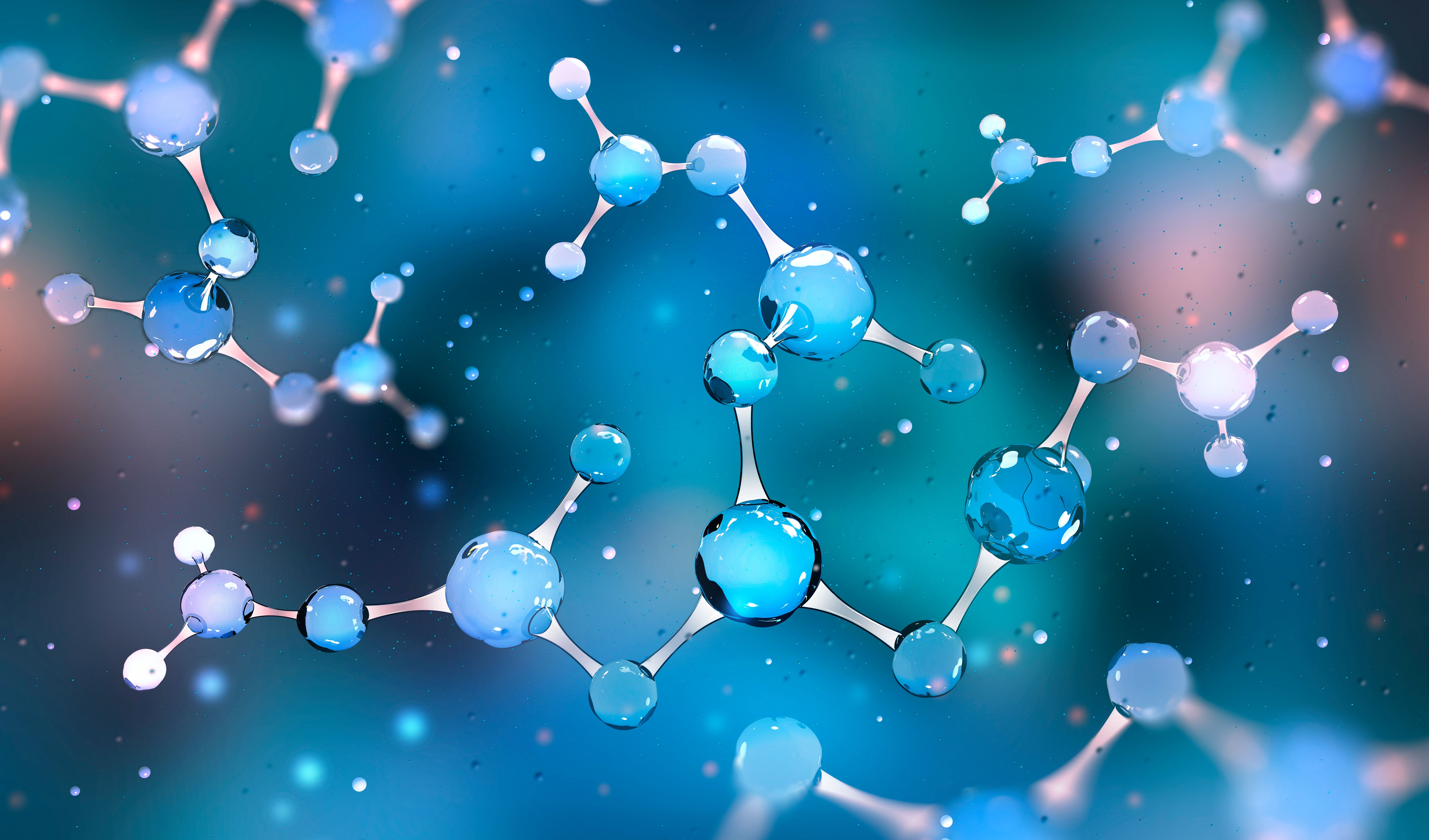New Chiral Stationary Phase for Multi-Mode HPLC Developed by Researchers at Xuzhou Medical University
Researchers at Xuzhou Medical University have developed a new type of chiral stationary phase (CSP) for HPLC that can be used under normal-phase, reversed-phase, and polar organic mobile phase conditions.
Researchers at Xuzhou Medical University in Xuzhou, PR China have successfully developed a new type of chiral stationary phase (CSP) for high-performance liquid chromatography (HPLC) that can be used under normal-phase, reversed-phase, and polar organic mobile phase conditions (1). The new CSP, called partially substituted 3-chloro-5-methylphenylcarbamate-(3-(2-O-β-cyclodextrin)-2-hydroxypropoxy)-propylsilyl-appended silica particles (35CMP-CD-HPS), is a β-cyclodextrin-bonded silica particle that has both electron-withdrawing chlorine and electron-donating methyl groups at symmetry-equivalent meta-positions of the phenylcarbamate-substituted moieties.
Molecule 3D illustration. Scientific breakthrough in the field of molecular synthesis. Nanotechnology in medical research of biochemical processes | Image Credit: © Siarhei - stock.adobe.com

The researchers characterized the new stationary phase 35CMP-CD-HPS using elementary analysis and Fourier transform infrared spectroscopy. They evaluated its chromatographic performance by separating positional isomers of disubstituted nitrophenol and nitroaniline and enantiomers of some chiral drug compounds. The results showed that 35CMP-CD-HPS exhibited excellent separation selectivity for the aromatic positional isomers and the enantiomers of a wide range of chiral drug compounds.
The hydroxyl residues of the partially substituted β-cyclodextrin and the stable ether spacer linking to the wider torus rim of β-cyclodextrin in the new 35CMP-CD-HPS phase were found to play important roles in chromatographic separations under multi-mode mobile phase conditions.
The researchers believe that the new CSP will be useful for the separation and analysis of chiral compounds in the pharmaceutical industry and in other fields where chiral separation is important. The development of new chiral stationary phases is an important area of research in the field of analytical chemistry, as chiral compounds have different biological activities and pharmacokinetic properties depending on their stereochemistry.
Reference
(1) Gong, Y.; et al. Application of a New Type of 3-Chloro-5-methylphenylcarbamate-β-cyclodextrin-bonded Silica Particles as Chiral Stationary Phase for Multi-mode HPLC. Chromatographia. 2023, 86, 135-142. DOI: 10.1007/s10337-023-04236-5
Study Explores Thin-Film Extraction of Biogenic Amines via HPLC-MS/MS
March 27th 2025Scientists from Tabriz University and the University of Tabriz explored cellulose acetate-UiO-66-COOH as an affordable coating sorbent for thin film extraction of biogenic amines from cheese and alcohol-free beverages using HPLC-MS/MS.
New Study Investigates Optimizing Extra-Column Band Broadening in Micro-flow Capillary LC
March 12th 2025Shimadzu Corporation and Vrije Universiteit Brussel researchers recently investigated how extra-column band broadening (ECBB) can be optimized in micro-flow capillary liquid chromatography.


